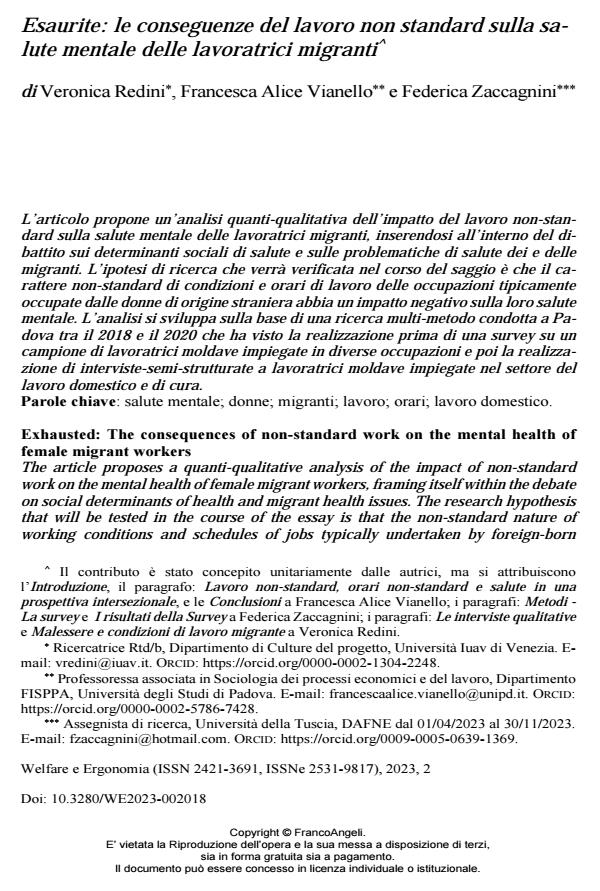Esaurite: le conseguenze del lavoro non standard sulla salute mentale delle lavoratrici migranti
Titolo Rivista WELFARE E ERGONOMIA
Autori/Curatori Veronica Redini, Francesca Alice Vianello, Federica Zaccagnini
Anno di pubblicazione 2024 Fascicolo 2023/2
Lingua Italiano Numero pagine 15 P. 255-269 Dimensione file 203 KB
DOI 10.3280/WE2023-002018
Il DOI è il codice a barre della proprietà intellettuale: per saperne di più
clicca qui
Qui sotto puoi vedere in anteprima la prima pagina di questo articolo.
Se questo articolo ti interessa, lo puoi acquistare (e scaricare in formato pdf) seguendo le facili indicazioni per acquistare il download credit. Acquista Download Credits per scaricare questo Articolo in formato PDF

FrancoAngeli è membro della Publishers International Linking Association, Inc (PILA)associazione indipendente e non profit per facilitare (attraverso i servizi tecnologici implementati da CrossRef.org) l’accesso degli studiosi ai contenuti digitali nelle pubblicazioni professionali e scientifiche
L’articolo propone un’analisi quanti-qualitativa dell’impatto del lavoro non-standard sulla salute mentale delle lavoratrici migranti, inserendosi all’interno del dibattito sui determinanti sociali di salute e sulle problemati-che di salute dei e delle migranti. L’ipotesi di ricerca che verrà verificata nel corso del saggio è che il carattere non-standard di condizioni e orari di lavo-ro delle occupazioni tipicamente occupate dalle donne di origine straniera abbia un impatto negativo sulla loro salute mentale. L’analisi si sviluppa sul-la base di una ricerca multi-metodo condotta a Padova tra il 2018 e il 2020 che ha visto la realizzazione prima di una survey su un campione di lavoratri-ci moldave impiegate in diverse occupazioni e poi la realizzazione di intervi-ste-semi-strutturate a lavoratrici moldave impiegate nel settore del lavoro domestico e di cura.
Parole chiave:salute mentale; donne; migranti; lavoro; orari; lavoro domestico.
Veronica Redini, Francesca Alice Vianello, Federica Zaccagnini, Esaurite: le conseguenze del lavoro non standard sulla salute mentale delle lavoratrici migranti in "WELFARE E ERGONOMIA" 2/2023, pp 255-269, DOI: 10.3280/WE2023-002018